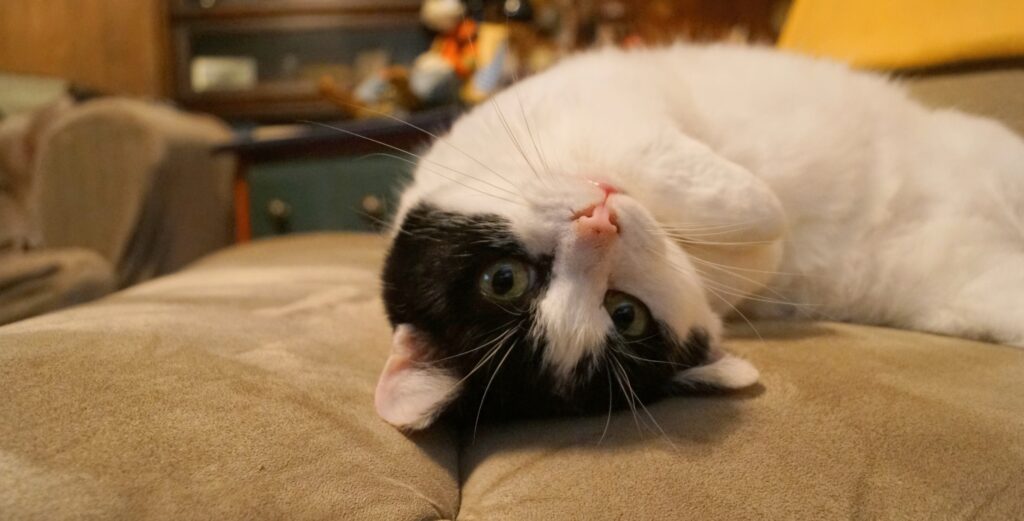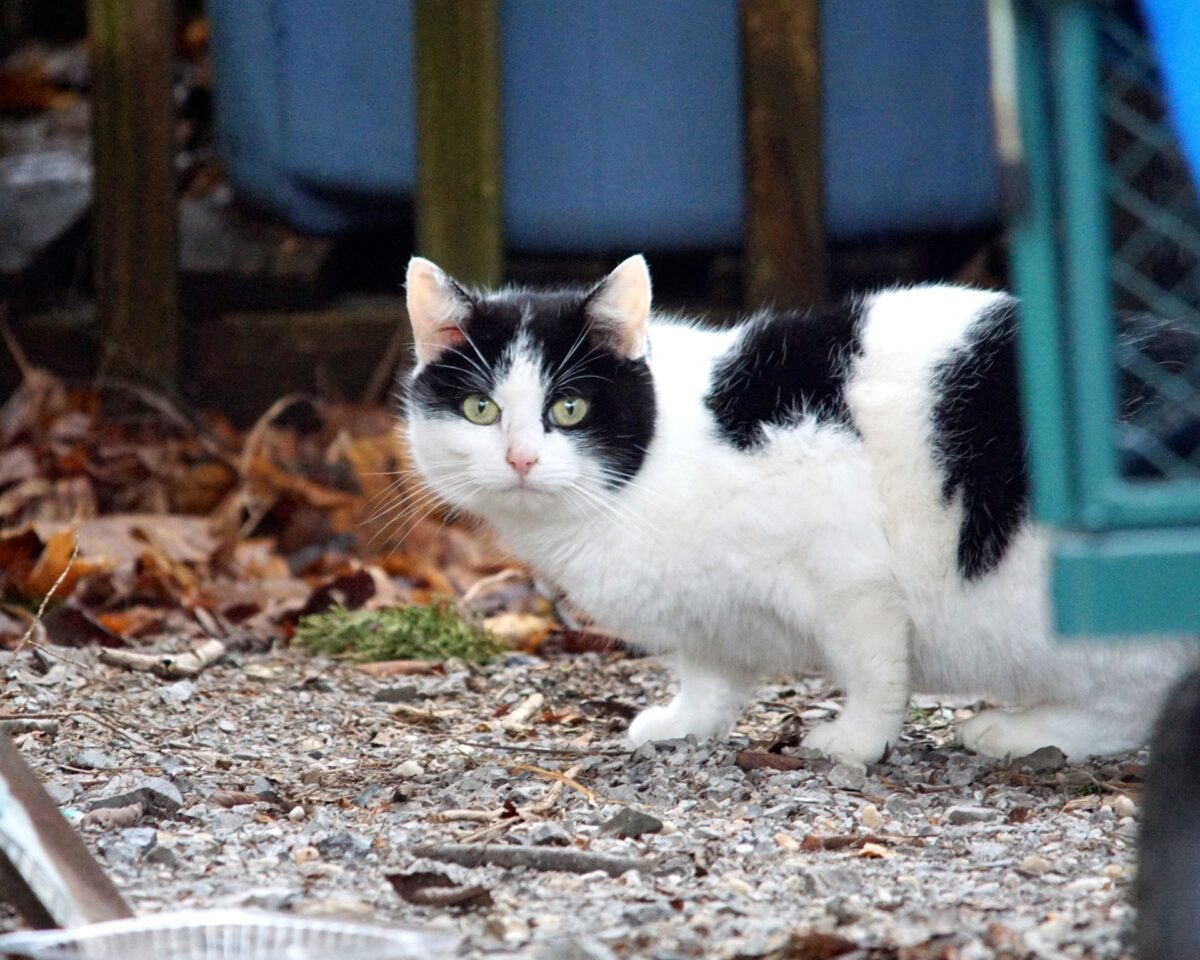In January 2018, Ann Shapiro saw a black-and-white cat hiding under a tree in her Tennessee yard. She spotted her again about a month later so she put out food and water, provided a heated outside shelter, and welcomed a new permanent guest. She live-trapped her and had her spayed in April. She gave the name Dorie to the small 1-year-old feral feline who didn’t trust humans.
Another black-and-white cat showed up after that, about the same age, and Shapiro assumed he was a littermate because Dorie followed him everywhere. She trapped and had him neutered in August and named him Spencer. Both cats were leery of Shapiro but sometimes she could touch them as they ate their food. Spencer passed away in July 2021 and Dorie wouldn’t go back into the outdoor shelters they slept in. When winter came, Shapiro put a heated blanket for Dorie on the carport.
Tennessee Winter Leads to Taking a Chance on Dorie
She had been living outside for four years, but in 2022 Dorie’s life changed forever. “In January of this year, we got a heavy drifting snow. I saw Dorie curled up on her blanket with snow on her back and it broke my heart,” Shapiro says. She decided she had to try and see if Dorie could become a happy, healthy inside cat.
“I went outside armed with canned food and a big towel hoping I would be able to get her to come to me – it took about an hour in the cold, but she got close enough for me to pick her up. I carried her in the house wrapped in the towel and put her in the extra bedroom,” Shapiro says. “She didn’t really fight me – she was scared, but wasn’t trying to get away.”
Adjusting to Indoor Life
“From the very beginning, I would spend hours in her room just talking to her and working on my laptop – streaming TV shows so there was sound in the room as I wanted her to get used to those noises,” Shapiro says. Although Dorie was leery anytime she came out from under the bed to see what Shapiro was doing – she’d slink around vs walking upright and her eyes and body were always on alert – she showed no signs of being aggressive.
“With truly or mostly unsocialized cats, the best approach is slow and steady desensitization — gradually increasing the dose of an aversive stimulus in order to reduce an emotional response,” says Laura Cassiday, CCBC, ABCCT, FFCP (Trainer), of Pawsitive Vibes Cat Behavior & Training. “This generally looks a lot like what Ann was doing if she just sat with the cat for short periods of time, maybe read to the cat, left food, or other gestures. Over time, the cat learns that the scary thing isn’t so scary after repeated exposure without anything bad happening.”
Could Dorie Live as an Indoor Cat?
When she brought Dorie indoors, Shapiro also had a resident cat, Newman. Newman and Dorie met through a baby gate after about the first month. Newman, a 14-year-old white male, doesn’t really mind Dorie because he’s been around previous foster cats, but Dorie still keeps her distance. Ann hopes they’ll someday be friends.
“Dorie still has a little bit of that ‘scared look’ when she hears a new noise or I move too fast. But she only runs a few feet away versus running totally into the other room or under the couch,” says Shapiro. “She is exploring every room and spends most of her days in the big room with me but will follow me into the sunroom in the evenings where we enjoy watching television.”

It was a worry that Dorie might not want to live indoors once spring got here. She likes to look out the full glass doors onto the deck but doesn’t try to go outside or cry and paw at the door. Shapiro says she just looks outside – and if Shapiro heads to the door to leave, Dorie runs into another room, or if she comes into the house through that door she runs away from it.
Slow and Easy Wins the Heart
Shapiro thinks taking things slow and easy and not having a lot of company or activity has helped Dorie get used to her inside home. The slow introductions to the different rooms helped her with her confidence and treats were a big help.
Cassiday, who is a Fear Free certified trainer, says, “My biggest advice for Ann and Dorie is to prioritize giving Dorie choice and control and never forcing her to do anything. Cats who have the power to make their own decisions are much more confident. Anyone who knows cats knows the benefit of letting them think something was their idea.”
This article was reviewed/edited by board-certified veterinary behaviorist Dr. Kenneth Martin and/or veterinary technician specialist in behavior Debbie Martin, LVT.
Sandra Toney has been writing about cats for over 25 years and is an award-winning member of the Cat Writers Association and the Dog Writers Association of America. She has written for many print and online magazines about cat health and behavior as well as authoring eight books. She lives in northern Indiana with her cat, Angel.
Want to stay in the loop on the latest and greatest in keeping your pet happy and healthy? Sign up for our free newsletter by clicking here!








